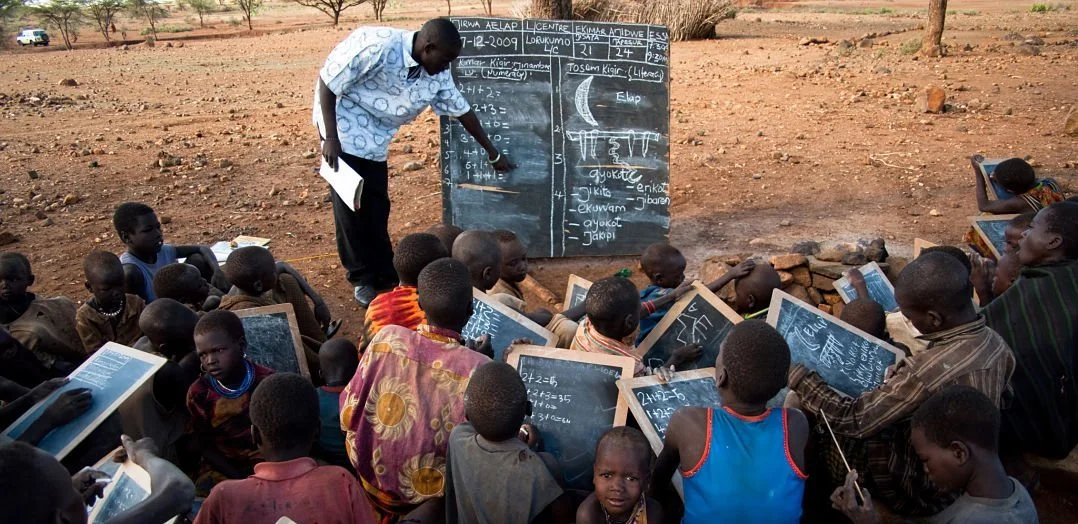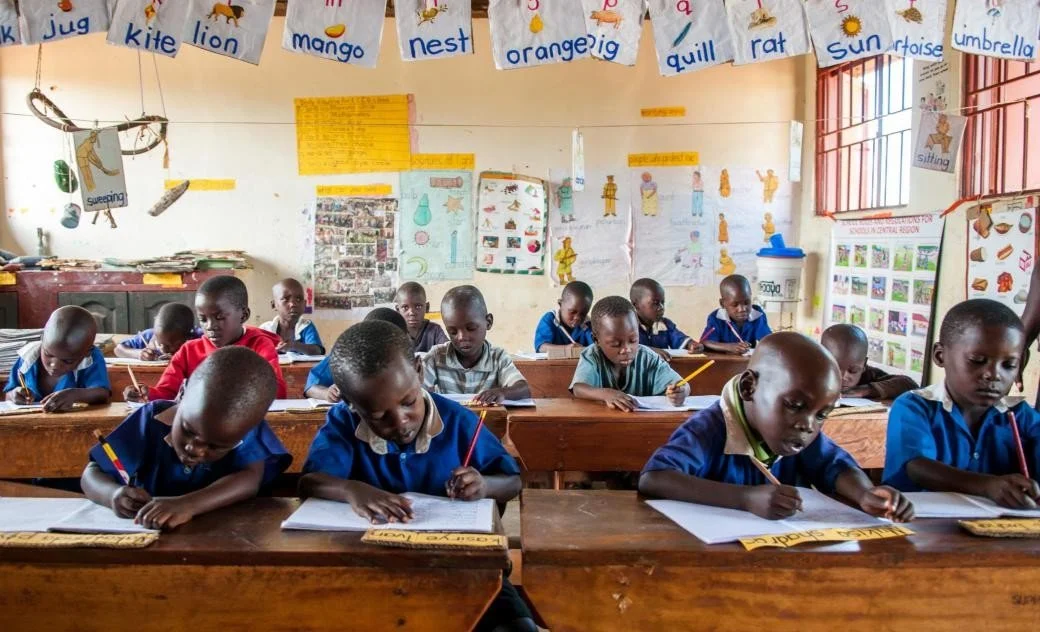The education system in Uganda
Formal Structure:
Uganda's formal education system is structured around primary (7 years), lower secondary (4 years), and upper secondary (2 years).
Language of Instruction:
English is the language of instruction at all levels of the formal education system.
Compulsory Primary Education:
Primary education is free and compulsory, aiming to ensure access for all children.
National Examinations:
Students take national exams at the end of primary school (Primary Leaving Certificate Examination), lower secondary (Uganda Certificate of Education), and upper secondary (Uganda Advanced Certificate of Education).
Post-Secondary Education:
Following secondary school, students can pursue vocational training or higher education, with programs ranging from 3 to 5 years.
Universal Primary and Secondary Education:
Uganda has made significant strides in providing universal primary and secondary education.



The government of Uganda recognizes education as a basic human right and continues to strive to provide free primary education to all children in the country. However, issues with funding, teacher training, rural populations, and inadequate facilities continue to hinder the progress of educational development in Uganda. More girls in Uganda complete primary school than boys (54% for girls versus 52% for boys), but the lead falls away for secondary school (25% for girls versus 28% for boys) and then at tertiary level there are significantly fewer women being educated than men (4% for women versus 6% for men).
In 1997 the Ugandan government introduced the Universal Primary Education (UPE) program to improve enrollment and attainment in primary schools. It was initially realized to provide free education for four children per family, but the program was not performing based in its regulations due to the complex structure of Ugandan families. Most Ugandan families have more than four children and households started sending every child, which resulted in a rapid increase in student enrollment in primary schools.
Due to the circumstances, President Museveni announced that the UPE was open to all children of all families (Omona 74). When the new policy was executed, schools experienced a massive influx of pupils and the demand for learning materials, teachers, and infrastructure became a challenge to the education system. Ngaka argues that the UPE resulted in costly consequences, including but not limited to a poor quality education, low pupil achievement, untrained teachers, improper infrastructures and classroom settings. The Human Rights Measurement Initiative gives Uganda a score of 92.3% for primary school enrolment.
Uganda has seven years of primary education and the legal age for school entry is six. According to the Ministry of Education and Sports (MoES) statistics, school enrollments increased from three million to 5.3 million in 1997 and the number rapidly increased to seven million by 2004. Even though the increased number of pupils was perceived as a good thing, there were only 125,883 teachers, exceeding the UPE required pupil-teacher ratio of 1:40. The large number of pupils makes the learning environment poorer as it becomes harder for the teacher to be heard and teach. According to Arbeiter and Hartley, classes have between 70 and 150 pupils and there is over-age studying in all schools. Moyi explains the issue of many classes having the inappropriate age of pupils as having been driven by late enrolment or grade repetition, which in turn is caused by the poor quality of education. For instance, “third grade included pupils aged between seven to sixteen years and in sixth grade there were pupils up to nineteen years of age."
Primary Education
The present system of education, known as Universal Primary Education (UPE), has existed since 1997, and its introduction was the result of democratisation and open elections, as there was popular support for free education. Despite its promising boosts in enrolment, issues with funding and organisation have continued to plague the UPE. In 1999 there were six million pupils receiving primary education, compared to only two million in 1986. Numbers received a boost in 1997 when free primary education was made available to four children per family. Not all primary school graduates go on to take any form of secondary education. This is contingent upon their passing their Primary Leaving Examinations (PLE)
Secondary Education
There is a significant disparity between enrolment rates in primary and secondary schools in Uganda. Census data from 2004 indicates that for every ten students enrolled in primary schools, only one is enrolled at a secondary institution. The Human Rights Measurement Initiative gives Uganda a score of 36%. The structure of Uganda's secondary education system follows the education system of its former colonial masters, Britain. It is divided into the Ordinary level and Advanced level.
Lower secondary consists of 4 years of schooling at the end of which students undertake Ordinary-level exams (O-level) in at least 8 subjects with a maximum of 10 subjects. Upper secondary consists of 2 years of schooling at the end of which students sit Advanced-level exams (A-level) in at least 3 subjects.
Post-secondary Education
Although 60,000 to 70,000 students in Uganda leave secondary school each year qualified to go on to higher education, only some 35 percent of them (25,000) are able to find places at the limited number of institutions. The majority of students go to universities, both public and private. Makerere University in Kampala has about half of the total student population in Uganda's universities. The remainder are distributed among the more than 30 private universities and a smaller number of non-university institutions.
Vocational And Technical Education
Vocational and Technical Education is a necessary aspect of the education system in Uganda. The UN has led efforts to support this form of education through the UNESCO subdivision International Centre for Technical and Vocational Education and Training (TVET). According to a UN report, "Uganda’s TVET mission is defined as being to ensure that individuals and enterprises acquire the skills they need to raise productivity and income." These TVET programs range in both complexity and scope. Some provide for craftsmen or technician level training that replaces standard modes of secondary education, while some TVET programs provide graduate engineering level education to students seeking education at the tertiary or post secondary level
Literacy Programs
Early literacy movements were characterized by Western aid and leadership and have since given way to a more local decentralized approach to adult and youth literacy in Uganda. This transition is due in part to the realization of leaders in the West and in Uganda that literacy, and literacy in English particularly, is not a silver bullet for solving Uganda's economic issues. Much of the literacy work is conducted by NGOs acting on a local level in conjunction with local or village governments. There is a great demand for these programs, and their rates of return, satisfaction,and literacy retention for graduates have been high. However, these programs face great challenges including lack of funding, social reluctance, and a general lack of appreciation for literacy and literature



